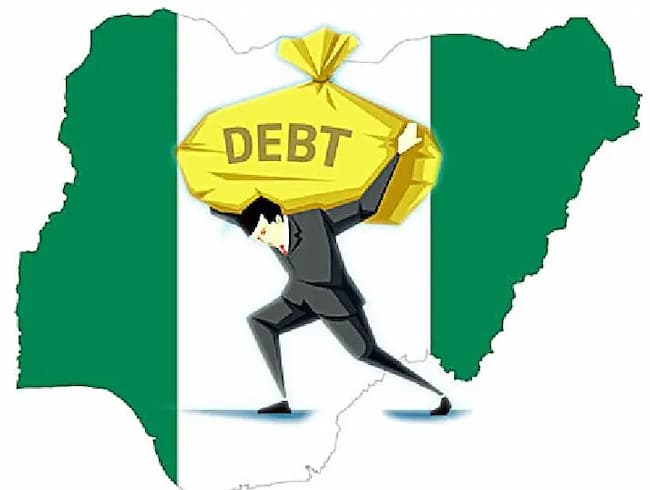According to the 2023-2035 Medium Term Expenditure Framework & Fiscal Strategy Paper, the Federal Government expects debt repayment to cost N10.43 trillion by 2025. This is a rise of 182.66 percent over the N3.69tn projected for debt service in 2022.
The Federal Government has been repeatedly cautioned by multilateral organizations and economists about the growing cost of debt payment, which might lead to a national catastrophe.
However, Dr Zainab Ahmed, Minister of Finance, Budget, and National Planning, and Patience Oniha, Director General of the Debt Management Office (DMO), have emphasized that the government is facing a revenue problem rather than a debt problem. The DMO stated that high debt levels would often lead to high debt service and affect investments in infrastructure. According to the DMO DG, “High debt levels lead to heavy debt service, which reduces resources available for investment in infrastructure and key sectors of the economy.”
She stressed the need for debt sustainability, which she defined as the ability to service all current and future obligations while maintaining the capacity to finance policy objectives without resorting to unduly large adjustments or exceptional financing, such as arrears accumulation or debt restructuring, which could otherwise compromise the economy’s stability.
Speaking at the launch of the World Bank’s Nigeria Development Update titled, “The Urgency for Business Unusual,” held recently in Abuja, the finance minister admitted that Nigeria was struggling to service its debt.
She said, “We are already struggling with being able to service debt because even though revenue is increasing, the expenditure has been increasing at a much higher rate, so it is a very difficult situation.”
The International Monetary Fund (IMF) had earlier warned that debt servicing might gulp 100 percent of the Federal Government’s revenue by 2026 if the government failed to implement adequate measures to improve revenue generation. According to the IMF’s Resident Representative for Nigeria, Ari Aisen, based on a macro-fiscal stress test that was conducted on the country, interest payments on debts might wipe up the country’s entire earnings in the next four years.
Aisen said, “The biggest critical aspect for Nigeria is that we have done a macro-fiscal stress test, and what you observe is the interest payments as a share of revenue, and as you see us in terms of the baseline from the federal government of Nigeria, almost 100 per cent of the revenue is projected by 2026 to be taken up by debt service.”
So, the fiscal space or the amount of revenues that will be needed, and this, without considering any shock, is that most of the revenues of the Federal Government are now, in fact, 89 percent, and it will continue if nothing is done to be taken by debt service.”
In less than two months after Aisen’s warning, Nigeria’s debt payment expenditures outpaced its earnings in the first four months of this year, according to the finance minister.
Between January and April 2022, debt servicing consumed N1.94 trillion, compared to N1.63 trillion in retained revenue.
Between January and November 2021, the Federal Government surpassed its debt service allotment by N1.15 trillion.
According to a copy of the finance minister’s public presentation of the approved 2022 budget, the Federal Government earmarked N3.32 trillion for debt payment in 2021.
However, according to the minister’s presentation paper, a total of N4.2tn was spent on debt servicing in 11 months, representing a disparity of N1.15tn, or 37.9% of the money allotted for debt servicing.
The debt servicing bill in Nigeria climbed by 109 percent, from N429 billion in December 2021 to N896 billion in March 2022.
According to research by the Nigerian Economic Summit Group and the Open Society Initiative for West Africa, Nigeria and ten other nations in the Economic Community of West African States are now in a financial crisis based on debt sustainability assessments.
Benin, Burkina Faso, Cabo Verde, the Gambia, Ghana, Guinea Bissau, Liberia, Niger, Senegal, and Togo are the other ten nations.
The analysis also revealed that these nations’ public debt buildup was becoming unsustainable and needed to be handled in order to avoid a debt catastrophe.The analysis cautioned that the likelihood of a Nigerian debt crisis would harm both public and private investments.
The World Bank recently said that Nigeria’s debt, which might be considered sustainable for now, was vulnerable and costly. According to the Washington-based global financial institution, the country’s debt was also at risk of becoming unsustainable in the event of macro-fiscal shocks. Experts have kicked against the Federal Government’s proclivity for debt, which they have described as unsustainable.














